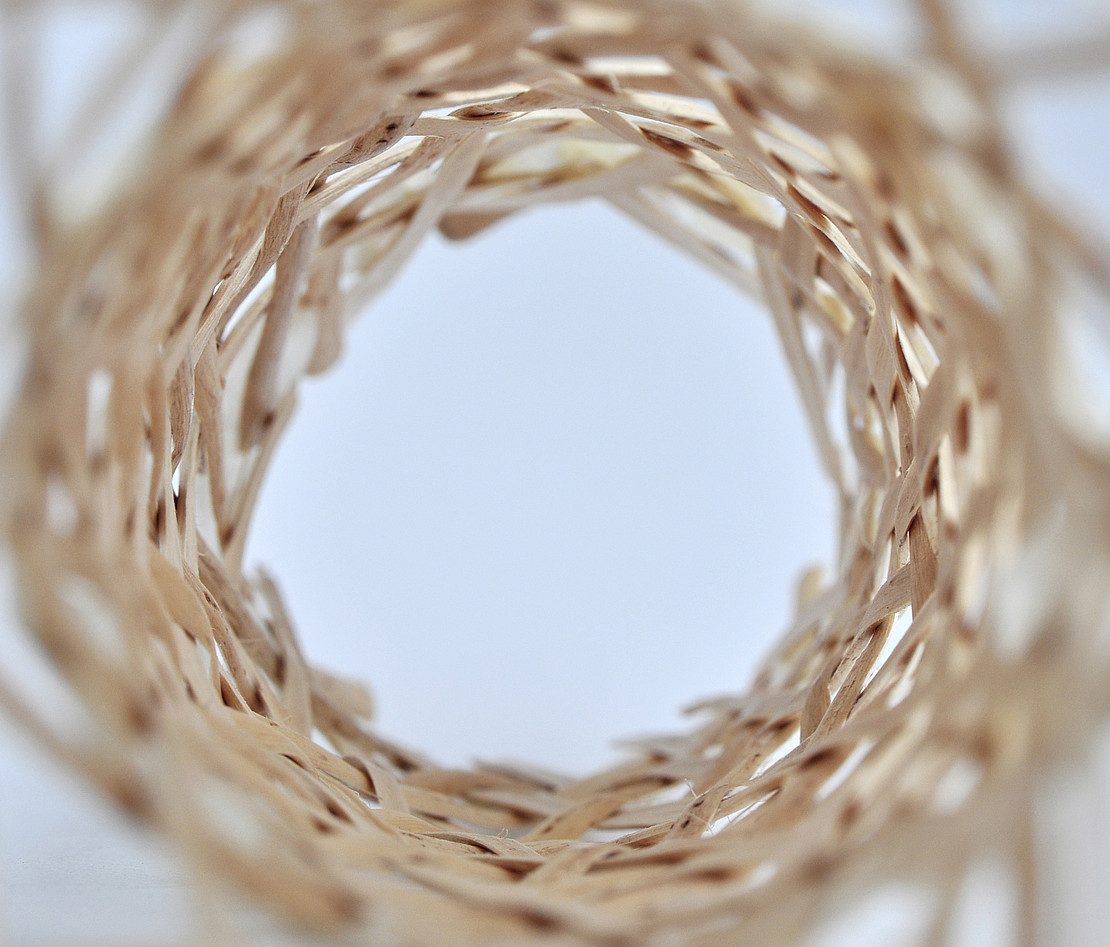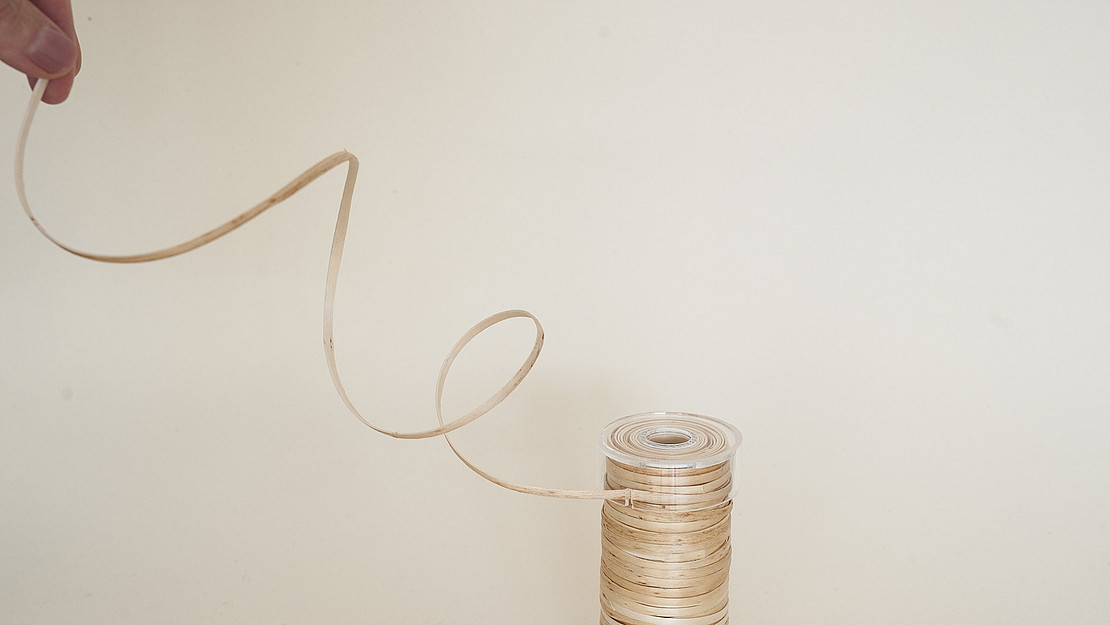This page contains automatically translated content.
Solid wood becomes textile

 Image: BUILDING ART FINDING/Klussmann, Silbermann
Image: BUILDING ART FINDING/Klussmann, SilbermannThe aim is to combine the outstanding eco-balance and aesthetics of solid wood with the advantages of textile constructions. The advantages of textiles lie in their outstanding suitability for lightweight construction, their functionalization and shaping possibilities, their highly developed and proven manufacturing and processing technologies, as well as in their characteristic aesthetics of parallel and intersecting threads, which have been known for millennia and have always been subject to change.
The Kassel scientists and designers led by Prof. Heike Klussmann join lightweight, flexible and tensile braided willow splints with a cross-section of a few square millimeters into a continuous thread at the end. The result is a new type of semi-finished product for further processing into textile structures: a solid wood monofilament. The monofilament can be spooled and then knotted, woven, braided, laid and wound using various processing methods. Control over the material's behavior is gained by converting handcrafted equipment, such as a loom. The goal is automated production on weaving and braiding machines as well as laying and winding robots.
Willow wood has been known for thousands of years from basketry. It is particularly flexible and has a particularly favorable ratio of weight to tensile strength. In the northern hemisphere, the cultivation of this rapidly renewable raw material is of particular agricultural interest on water-rich soils. Depending on the supplementary treatment, the wood textiles subsequently acquire strength. This makes it possible to obtain various textile molded wood parts that can be used in architecture, construction, vehicle manufacturing or product design - for example, for structural components, facades, furniture or car interiors.
"Our development combines the advantages of textiles with those of solid wood," describes Professor Klussmann. "Textiles are lightweight, flexible, very malleable and aesthetic. In addition, wood is sustainable and its versatile cultivation offers prospects for agriculture, including in Germany." Project manager Stefanie Silbermann adds, "Basically, we are literally picking up a thread that broke off quite a few decades ago - basketry has a long tradition in Central Europe. There were also beginnings for wood weaving in the crafts of the 19th and early 20th centuries. Efforts at the Academy of Agricultural Sciences of the GDR in Eberswalde in the 1980s to develop endless threads of willow wood to equip looms broke off with German reunification."
The research network TETHOK - Textile Tectonics in Wood Construction will exhibit the project and prototypes from May 27-31 at LIGNA in Hanover - the world's leading trade fair for woodworking tools, machinery and equipment - in Hall 11 at Stand 64/66.
The choreography for dance CROSS THE LINE with an interactive stage set made of wood textile will premiere on June 14, 2019 at the Theater Am Neuen Garten 64 in Potsdam. Choreography: Jean Marc Lebon, Katelijne Philips-Lebon, Nina Ihlenfeld.
The publication RETHINKING WOOD - Future Dimensions of Timber Assembly with the book chapter Textile Tectonics for Wood Construction will be published in May 2019 by BIRKHÄUSER, ed. Markus Hudert/Sven Pfeiffer.
The research network TETHOK - Textile Tectonics for Wood Construction at the University of Kassel includes the following departments:
Research Platform BAU KUNST ERFINDEN | Prof. Heike Klussmann | Spokesperson
FG Experimental and Digital Construction and Design | Prof. Philipp Eversmann,
FG Separating and Joining Manufacturing Processes | Prof. Dr.-Ing. Prof. h.c. Stefan Böhm
Institute of Materials Engineering/Plastics Technology | Prof. Dr.-Ing. Hans-Peter Heim,
FG Building Mechanics/Building Dynamics | Prof. Dr.-Ing. habil. Detlef Kuhl
FG Building Conservation and Timber Construction | Prof. Dr.-Ing. Werner Seim
Contact:
Prof. Heike Klussmann, Dipl.-Des. Steffi Silbermann
University of Kassel
Department of Fine Arts/Research Platform BAU KUNST ERFINDEN
E-Mail: steffi.silbermann[at]asl.uni-kassel[dot]de
www.baukunsterfinden.org